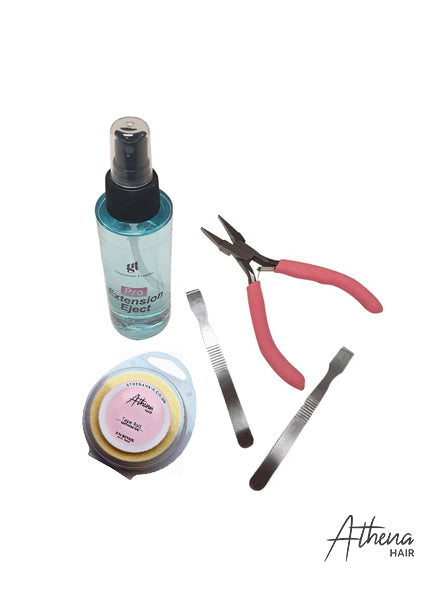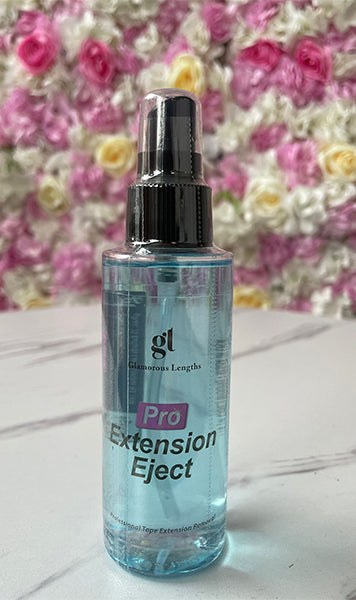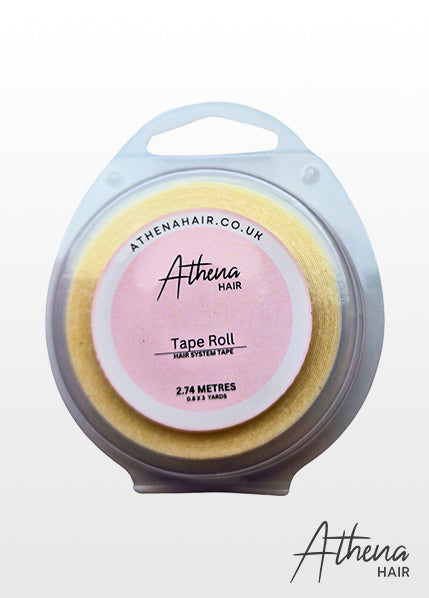
How to Detangle Clip Ins Hair Extensions Without Damage
The night before my best friend's wedding was supposed to be a time of excitement, laughter, and final dress fittings. Instead, I found myself locked in a hotel bathroom, staring in horror at a matted, knotted mess of clip ins hair extensions that only hours ago had been smooth and silky. I'd invested in beautiful, affordable hair extensions made from genuine human hair, thinking they would be easy to manage. I had assumed that because they were human hair, they'd behave just like my natural strands. I couldn't have been more wrong. The panic set in quickly — salons were closed, and I was hours away from needing to look picture-perfect. But through that moment of chaos, I discovered that detangling extensions is an art form — and that knowing how to detangle extensions properly can save you time, money, and a lot of stress. Today, I'm sharing the detailed, professional method that rescued my hair that night and has kept every set of clip ins hair extensions I've worn since looking flawless.
Why Proper Detangling Is Absolutely Crucial
When you invest in clip ins hair extensions, whether they are luxury bundles or affordable hair extensions, you’re not just purchasing extra length or volume — you’re investing in confidence, beauty, and self-expression. Proper care is essential to protect that investment and ensure your extensions continue looking flawless for as long as possible. Unlike your natural hair, clip ins hair extensions are missing a vital source of nourishment: the oils your scalp naturally produces. These oils help protect and moisturise your own strands, keeping them supple and resilient. Extensions, however, are effectively "disconnected" from this natural source of hydration. Without extra care, they can quickly become dry, brittle, and prone to tangling.
Neglecting proper detangling techniques can lead to serious issues that go far beyond just a few knots:
Irreversible breakage : Rough brushing or tugging can snap the delicate strands, causing thinning and patchiness in your wefts.
Shortened lifespan : Extensions that could last 9–12 months with good care might only survive a few months if handled poorly.
Unmanageable frizz and split ends : Damaged hair fibres lose their sleek, polished appearance and become difficult to style — no matter how much serum you apply.
Wasting your investment : Whether you’ve opted for high-end human hair extensions or affordable hair extensions, no one wants to spend hard-earned money on something that doesn’t last.
Think of your extensions as you would a favourite cashmere jumper or silk blouse: delicate, precious, and deserving of careful handling. A little extra time spent gently detangling your clip-ins can mean the difference between silky, luxurious locks that turn heads — and dry, frazzled hair that leaves you disappointed. Moreover, detangling isn't just about appearance. Proper, regular detangling helps preserve the integrity of the hair shaft, reducing the risk of severe matting and knots that can eventually become impossible to undo without cutting the hair. Whether you're prepping for a glamorous night out, a work event, or simply clipping them in to add a boost to your everyday look, taking a few mindful minutes to detangle ensures that your clip ins hair extensions always look and feel their best.
Treat your extensions with the same love and attention you would your natural hair — if not more. Because when you care for your extensions properly, they reward you with endless good hair days, confidence boosts, and effortless beauty.

Common Causes of Tangled Clip Ins Hair Extensions
Understanding why your clip ins hair extensions can get tangled is the first step in keeping them looking fresh and flawless. By identifying the common causes of tangling, you can proactively avoid these issues and protect the longevity of your human hair extensions — whether you’ve chosen affordable hair extensions.
Below are the top reasons your clip-ins might turn into a dreaded knotted mess:
Friction : Rubbing against clothing (especially woolly scarves, jackets, or sequins) can rough up the cuticle.
Product Buildup : Heavy styling products without proper cleansing weigh down the hair and cause matting.
Poor Storage : Tossing clip-ins into a drawer or bag causes strands to intertwine and knot.
Weather Conditions : Humidity, wind, and rain can dry out extensions, causing them to snag and tangle.
Neglecting Regular Brushing : Allowing small tangles to develop into larger ones makes detangling more painful and damaging later.
By understanding these common causes of tangling, you’ll be better equipped to protect your clip ins hair extensions from damage. Prevention is the key to long-lasting, beautiful hair — and it all starts with being mindful of how you treat, store, and care for your extensions.
The next time you wear your human hair extensions or affordable hair extensions, remember to take proactive steps to avoid these pitfalls. A few small changes in your routine can help your clip-ins stay silky, shiny, and tangle-free for months, ensuring that your investment remains as beautiful and functional as the day you first clipped them in.

How to Detangle Clip Ins Hair Extensions Without Damage
Clip-in hair extensions come as a set of wefts, which are small sections of hair attached to tiny, discreet clips. These clips securely fasten to your natural hair, allowing you to add length and volume exactly where you need it. Whether you're after a full, glamorous look or just a subtle boost, clip-ins give you total control.However, To keep them looking their best, it's essential to learn how to detangle clip-in hair extensions without causing damage.
Step 1: Gather Your Tools
A wide-tooth comb or specialist detangling brush (e.g., Tangle Teezer or Wet Brush)
A spray bottle filled with water or a gentle leave-in conditioner formulated for human hair extensions
Sectioning clips
A soft microfibre towel
Optional: A silk or satin mat to lay the extensions on during the process
You'll need:
Step 2: Prep the Extensions
Lay your clip ins hair extensions flat on a clean, dry surface. (Tip: If you have an extension hanger, use it for better control and to keep the wefts organised.)
Lightly mist each weft with water or a detangling spray. (Avoid soaking them — you want the hair slightly damp, not wet.)
Focus on gentle dampening to help loosen knots without putting extra stress on the strands.
Step 3: Start from the Bottom and Work Your Way Up
Begin detangling at the ends of the hair first, not the roots.
Hold the hair securely just above the section you’re working on to reduce tension on the weft and avoid pulling.
Use gentle, short strokes with your brush or wide-tooth comb, gradually working your way upwards towards the roots.
Never force the brush through from the top — this can worsen knots and risk snapping delicate strands.
Take your time — detangling should feel calming, not rushed. Patience will help preserve the integrity and beauty of your clip-in hair extensions.
Step 4: Work in Sections
Divide your extensions into small, manageable sections using sectioning clips.
Focus on one section at a time, moving fully detangled wefts aside to prevent them from re-tangling.
Be patient and methodical—even the best-quality or most affordable hair extensions can knot further if you rush or skip this step.
Step 5: Rinse (If Needed) and Air Dry
Rinse gently: If you’ve applied leave‑in products or the hair feels heavy after detangling, rinse each weft with lukewarm water.
Blot excess moisture: Use a microfibre towel to gently press out water—never wring or twist the hair, as this can cause breakage.
Air dry flat: Lay the wefts on a clean towel and allow them to dry naturally.
Quick-dry option: If you’re pressed for time, finish with a cool shot from your hairdryer—but avoid direct heat whenever possible to protect the hair’s integrity.
Step 6: Store Your Extensions Properly
An extension carrier with a hanger
A satin or silk bag
A dedicated drawer lined with satin
Once completely dry, gently brush through your extensions again and store them neatly.
Options for storage:
Proper storage is key, especially if you want your clip ins hair extensions — even the most affordable hair extensions — to stay soft and silky for months.


Common Mistakes to Avoid When Detangling Clip Ins Hair Extensions
Brushing Dry, Dirty Hair : Always detangle after misting lightly with water or leave-in conditioner.
Using Regular Hairbrushes : These can tug harshly on the weft and snap delicate strands.
Skipping Routine Maintenance : A quick daily brush prevents serious matting later.
Storing Extensions Improperly : Always separate and lay flat — never shove clip-ins into a drawer.
Ignoring Product Buildup : Clarify gently with a sulphate-free shampoo when needed to prevent stickiness and tangling.
Avoiding these mistakes helps your human hair extensions look salon-fresh every time you clip them in.

Extra Tips for Healthy, Tangle-Free Clip-Ins
Brush them before and after every wear.
Braid or twist extensions gently before storing to minimise tangles.
Invest in a silk pillowcase if you occasionally nap with clip-ins (although ideally, remove them before sleeping!)
Use a heat protectant spray religiously before styling with hot tools.
Deep-condition once a month, especially if you regularly heat-style your extensions.
Whether you’ve invested in premium bundles or opted for affordable hair extensions, simple daily care—like gentle brushing, proper storage and using extension‑safe products—keeps them silky and salon‑fresh much longer.
FAQs
Q: What are the best techniques for detangling clip-in hair extensions? A: Gently brush from the ends upward using an extension-safe brush, holding the hair near the clips to avoid tension. Use a detangling spray or light conditioner to ease knots, and work in small sections to prevent damage.
Q: How often should I detangle my clip ins hair extensions? A: Before and after every use — plus a gentle brush if stored away for longer periods.
Q: What type of brush is best? A: A wide-tooth comb or a soft detangling brush specifically designed for extensions.
Q: What should I do if my extensions are badly matted? A: If home detangling fails, don’t force it. Take them to a professional salon that specialises in extensions.
Taking proper care of your clip ins hair extensions isn’t just about vanity — it’s about protecting your investment, whether you’ve chosen high-end strands or affordable hair extensions. By following this gentle detangling routine, being mindful of daily maintenance, and showing your extensions a little TLC, you’ll enjoy gorgeous, flowing locks every time you clip them in. Because true beauty isn't just about how your hair looks — it's about how it makes you feel. And feeling fabulous is priceless.





Leave a comment